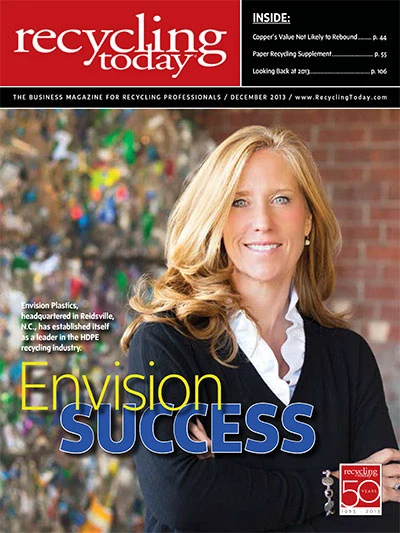
March 13: Encyclopaedia Britannica Discontinues its Print Edition After 244 Years
July 30: Blackouts in India Leave 600 Million People without Power
Sept. 11: A Terrorist Attack Kills U.S. Ambassador to Libya J. Christopher Stevens
Oct. 29: Superstorm Sandy Hits the Mid-Atlantic Region of the U.S.
Consuming Markets
Something Old, Something New
 One of the oldest existing companies in the red metals industry, Spain’s La Farga Group, followed through on a major investment in America’s Midwest with the opening of its SDI La Farga LLC joint venture smelter near Fort Wayne, Ind.
One of the oldest existing companies in the red metals industry, Spain’s La Farga Group, followed through on a major investment in America’s Midwest with the opening of its SDI La Farga LLC joint venture smelter near Fort Wayne, Ind.
An open house ceremony in July 2012 put on display the 85,000-square-foot facility and its 320-metric-ton furnace, a key piece of equipment in SDI La Farga’s production of copper wire made from red metal scrap.
Officials welcomed the investment in a furnace that is 1.5 times larger than La Farga’s furnace in Spain.
Industry Leaders
Rising to the Top
The Institute of Scrap Recycling Industries Inc. (ISRI), Washington, D.C., has welcomed to its board and its executive positions many recyclers with humble origins. Jerry Simms, who has served as ISRI’s president since April 2012, is among those who worked his way up throughout his career.
Simms entered the scrap industry working for a friend’s family in the Cleveland area, driving trucks and learning the basics of scrap metal operations.
By the mid-1970s, he had moved to Colorado, where, along with a brother and a cousin, he started a scrap peddler business that used a household garage as its operations center. “We’d go around picking up scrap from electricians and plumbers and machine shops and the like,” Simms recalled for a 2012 Recycling Today interview.
Simms eventually began working for Denver-based Atlas Iron & Metals, where he rose through the ranks while also getting involved in volunteer work with the Institute of Scrap Iron and Steel (ISIS) and then its successor, ISRI.
Business Trends
PET Projects
For much of the time since their introduction in the 1970s, polyethylene terephthalate (PET) soda and water bottles have been a target for recycling advocates as a form of packaging whose recycling end markets have been deemed inadequate.
 End markets for PET bottles have historically included some export destinations as well as carpet fiber production plants located primarily in the southeastern United States. It has not been until the 21st century for the most part that significant capital investment has gone into recycling scrap PET bottles back into new PET bottles in the U.S. Such investments have continued in the past two years, helping to create a better floor price for scrap PET bottles as well as increasing the recycling rate.
End markets for PET bottles have historically included some export destinations as well as carpet fiber production plants located primarily in the southeastern United States. It has not been until the 21st century for the most part that significant capital investment has gone into recycling scrap PET bottles back into new PET bottles in the U.S. Such investments have continued in the past two years, helping to create a better floor price for scrap PET bottles as well as increasing the recycling rate.
Perpetual Recycling has been one investor, with a 100,000-square-foot plant in Richmond, Ind., that began operating in January. The company’s CEO David Bender told Recycling Today for a July 2013 article that the plant is converting PET bottles into recycled flake suitable for food-grade packaging applications.

Explore the December 2013 Issue
Check out more from this issue and find your next story to read.
Latest from Recycling Today
- Orion ramping up Rocky Mountain Steel rail line
- Proposed bill would provide ‘regulatory clarity’ for chemical recycling
- Alberta Ag-Plastic pilot program continues, expands with renewed funding
- ReMA urges open intra-North American scrap trade
- Axium awarded by regional organization
- Update: China to introduce steel export quotas
- Thyssenkrupp idles capacity in Europe
- Phoenix Technologies closes Ohio rPET facility





